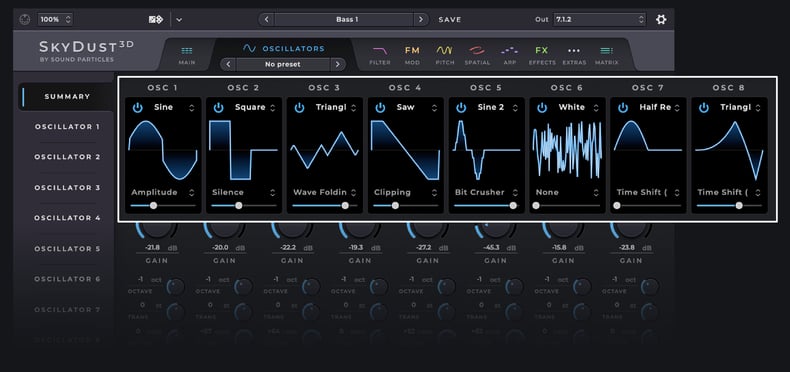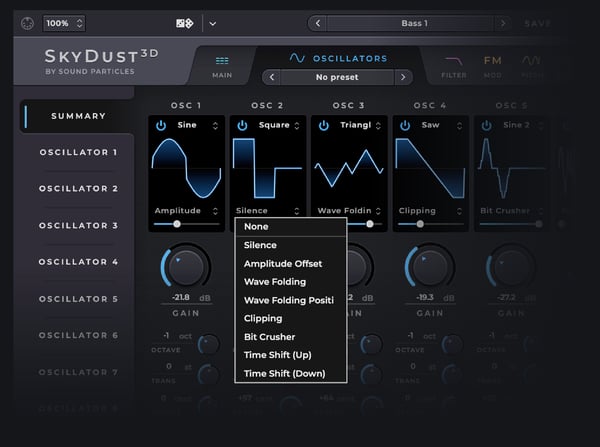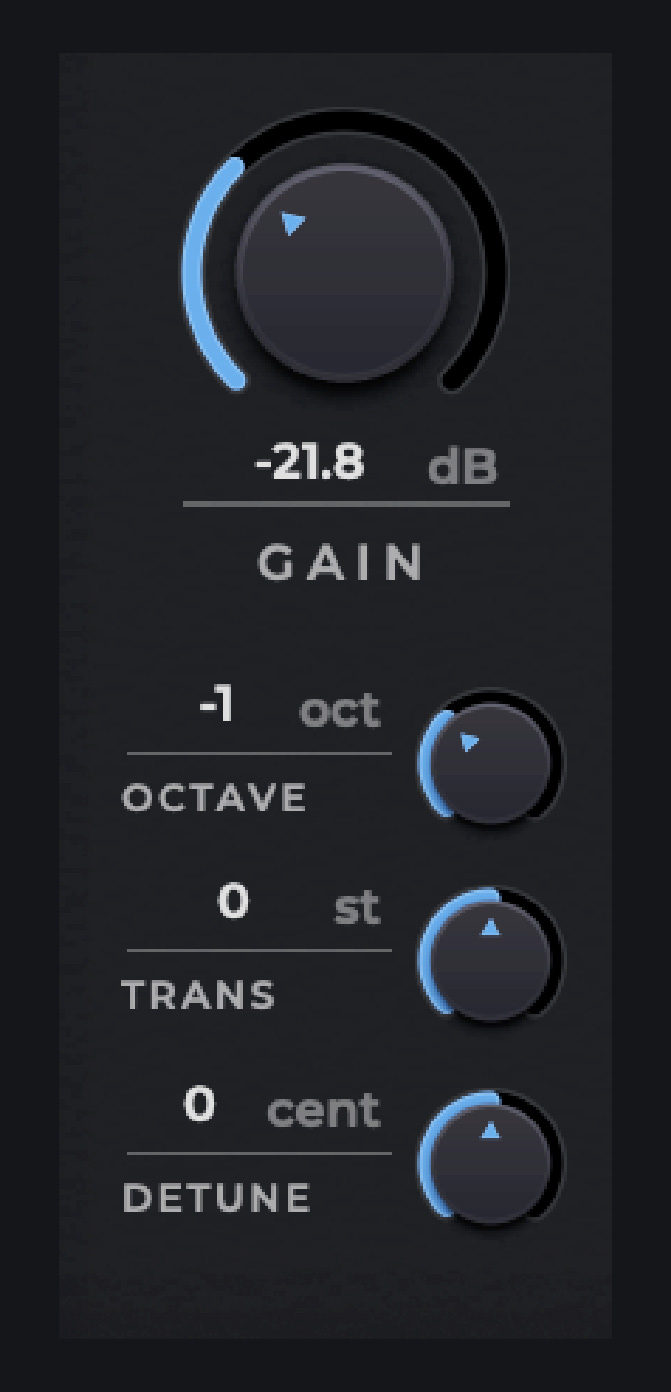Welcome to the Synth Tutorial series! If you're new to the world of synthesizers or just getting started with our SkyDust 3D, you're in the right place. In this series, we'll walk you through the fundamentals of sound synthesis using our SkyDust 3D, starting with getting oscillators explained. Don't worry if you're a complete beginner, we'll break down complex concepts into easy-to-understand explanations.
In this first article, we'll demystify the concept of oscillators, which play a fundamental role in shaping sound. So, let's dive in and unravel the magic behind oscillators!
What are Oscillators?
In simple terms, an oscillator is the heart and core element of a synthesizer. It generates the raw sound waveforms that form the basis of all the sounds you can create. Oscillators produce various wave shapes, including the commonly used Sine, Square, Triangle, and Saw waves, each possessing its unique sonic characteristics. In the case of the SkyDust 3D, you have the flexibility of utilizing up to 8 oscillators per note, providing extensive customization for each individual note.
Understanding Waveforms
Waveforms define the shape and character of the sound produced by an oscillator. Let's explore some common waveforms:
-
Sine Wave: The sine wave is a pure, smooth waveform that sounds mellow. It lacks harmonics and creates a pure tone without any additional coloration.
-
Square Wave: The square wave produces a bright, buzzy sound with a rich harmonic content. It consists of alternating high and low voltage levels, creating a distinctive square-like shape.
-
Saw Wave: The saw waveform resembles the teeth of a saw and produces a rich, bright sound. It contains harmonics that gradually decrease in intensity as the frequency rises.
-
Triangle Wave: The triangle waveform sounds smoother than the square and saw waves. It has a mellow quality and is commonly used for creating softer, more rounded sounds.
Additionally, SkyDust offers a wide range of additional waveforms, such as multiple variations of Sine waves for added versatility, as well as white noise, pink noise, brown noise, and binary noise, which are particularly suitable for creating ambient pad sounds or percursive impacts.

Waveform Modifiers
Waveform modifiers, also known as waveform shaping, are techniques and tools that enable you to modify the shape and characteristics of a waveform generated by an oscillator. These modifiers provide the means to sculpt and manipulate the timbre of the waveform, allowing you to create complex and distinctive sounds that go beyond the standard waveforms. Within SkyDust, you have access to a variety of modifiers that greatly enhance your ability to manipulate and shape sounds. These modifiers include Silence, Amplitude Offset, Wave Folding, Positive Wave Folding, Clipping, Bit Crusher, Time Shift Up, and Time Shift Down. By utilizing these modifiers, you can expand your creative possibilities and explore new dimensions in sound manipulation.

Manipulating Oscillators
Now that we understand the basics of waveforms, let's explore how we can manipulate oscillators to shape our sound further:

- Gain: Determines the amplification or attenuation of an audio signal, adjusting its level in decibels (dB). It's important to note that gain is distinct from volume or the perceived loudness of the sound. Gain primarily influences the strength or intensity of the signal itself.
- Octaves: Octave controls allow you to shift the pitch up or down by one or more octaves. This provides a broader range of tones to work with.
- Transpose: Allows you to shift the pitch of a sound or musical note up or down by a specified interval. It is commonly used for tasks such as adapting a piece of music to a different key, harmonizing melodies, or exploring creative musical ideas.
- Detuning: Detuning involves slightly adjusting the frequency of multiple oscillators to create a thicker, more complex sound. It adds depth and richness to your sounds.
Mastering Oscillators
To wrap up this tutorial, if you want to master your synth's Oscillators, you have to feel comfortable and confident with them. To do that, you have to experiment and let your creativity flow. Explore SkyDust by applying the following:
-
Experiment with different waveforms: Try blending or layering different waveforms to create unique sounds with varying textures and characters.
-
Combine oscillators: Don't limit yourself to a single oscillator, try using multiple oscillators together to create thicker, more complex sounds.
-
Manipulate oscillators: Shape the sounds differently using gain, octaves, transpose and detune. Combine them with waveform modifiers and multiple oscillators. The Sky is the limit.
When you start feeling comfortable with Oscillators, move forward to the next tutorial to learn additional components of a synthesizer and start exploring modulation possibilities to start bringing life and movement to your sounds.
See you on the next tutorial!
Stay tuned and join the revolution!
Topics: Sound Particles, Sound Design, Tutorials, 3D audio, Surround Sound, Music, synth, virtual instrument, synthesizer, SkyDust3D
![Tutorial: Programming a Synth - Oscillators Explained [1/12] Tutorial: Programming a Synth - Oscillators Explained [1/12]](https://blog.soundparticles.com/hs-fs/hubfs/header-Jun-20-2023-02-33-13-1029-PM.jpg?width=900&height=230&name=header-Jun-20-2023-02-33-13-1029-PM.jpg)
